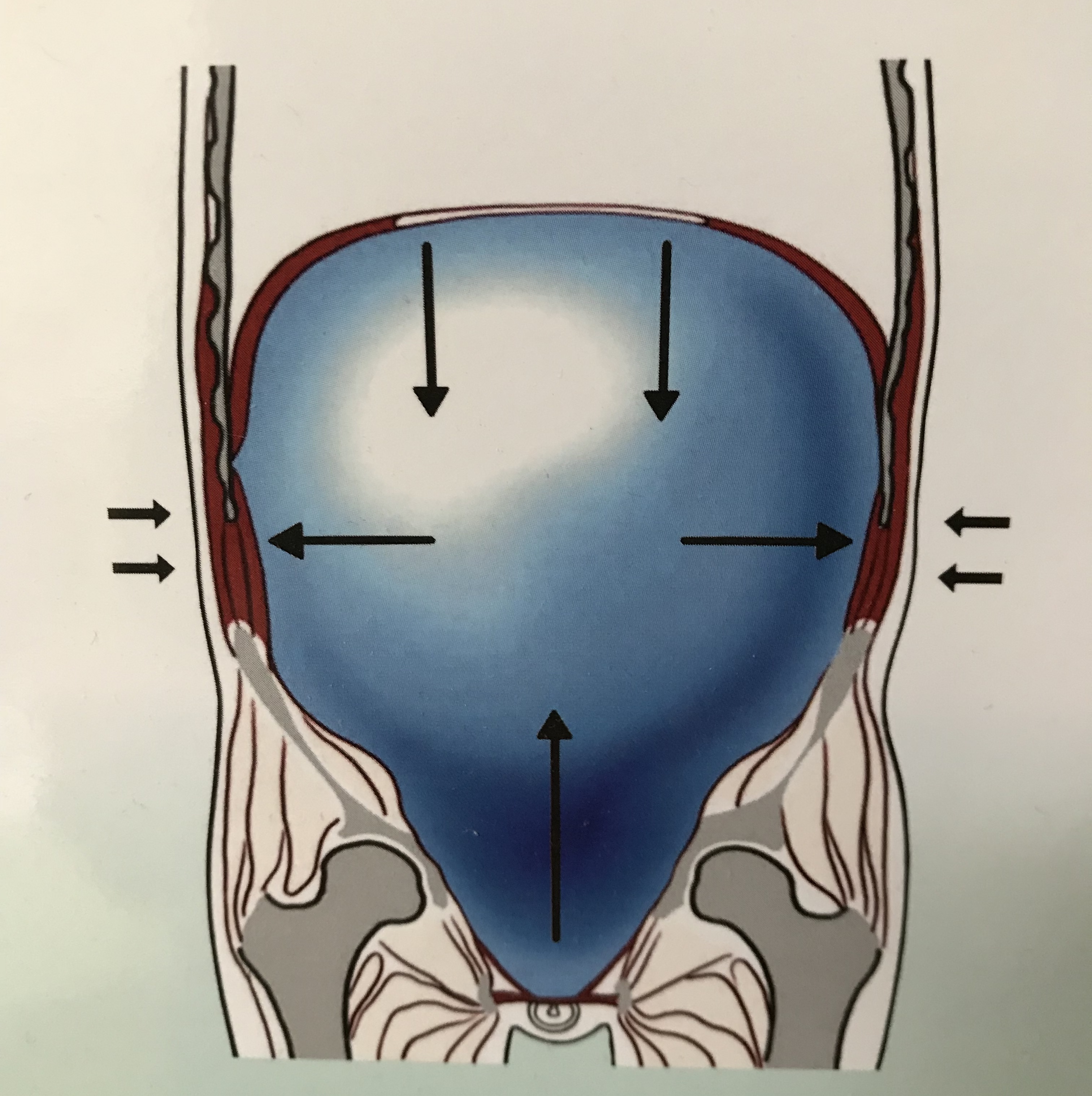Your Diaphragm is a Back Muscle!
by Tiffany Turley
When you think of your diaphragm you probably think of it as something that helps you breath and not much more than that. But your diaphragm is actually one of your major back muscles! Because of its attachments to the spine, ribs and sternum, the diaphragm is integral in supporting the joints and disks of the back and in keeping your spinal column upright and stable.
How do we keep this muscle strong and healthy? Diaphragmatic breathing. When we inhale and the diaphragm contracts, it moves downwards, not upwards like we might imagine. This downward movement creates an expansion of the lower ribs, waist, lower back and front of abdomen. This expansion is caused by pressure that builds with the downward movement of the diaphragm in the abdominal cavity called intra-abdominal pressure (IAP).
Optimal IAP causes a relatively even, 360 degree expansion of the abdominal cavity. To visualize this, imagine a circle expanding evenly into an even larger circle. The inner circle is the abdominal cavity while the outer circle is abdominal wall. The optimal expansion of IAP sends a signal to abdominal wall, formed by the trunk muscles including many of the abdominal muscles, to gently contract against this pressure. When these muscles respond appropriately to IAP, the abdominal muscles expand (stretch) and contract (resist) at once. This response maintains the pressure so that your organs, joints and disks are protected.
A healthy back is one that is upright without excessive lordosis (arching in) or kyphosis (rounding out). When we consider the essential role of the diaphragm in developing and maintaining a healthy spine, it is abundantly clear that diaphragmatic breathing is a necessity for spinal health.
So why is it that so many adults don’t breath diaphragmatically? As adults we may adopt one of several different dysfunctional breathing patterns. This is mainly due to 3 factors:
1) Cultural ideas about posture and breathing:
It’s common for many of us to have been exposed to certain ideas and expectations regarding our posture. We may have been told we need to “stand up straight” or “open up our chest.” Dysfunctional habits such as pulling our shoulders back or taking deep chest breaths to improve our posture often manifest as a result of misunderstandings about how and why to improve posture, and these habits often lead to chronic chest breathing rather than diaphragmatic breathing.
2) Breathing in and out of our mouth
When we mouth breath, the air is not pulled down as deeply into the lungs because the diaphragm does not fully contract. Mouth breathing is not only shallow breathing, it also recruits the upper back and neck muscles and this can, over time, contribute to chronic tension in the neck and shoulders.
3) Tightening the abdomen to “flatten the stomach” and brace the lower back.
For those with lower back pain, tightening the rectus abdominus, or our main abdominal “tucking muscle,” might be relieving, temporarily. But remember, in order for you diaphragm to support your back you need to have the appropriate amount of IAP. For the right amount of IAP, your abs need to need to be able to expand on inhalation. Also remember that your diaphragm needs to be able to move downward to create IAP, and it can’t do that if your abs are held tight. “Sucking it in” creates a dysfunctional tension that will only make your back tighter and weaker with time.
So how do you strengthen your diaphragm in a way that is good for your back? Just like with any other muscle it takes practice to re-learn how to use the diaphragm properly and time devoted daily to challenging it and making it capable of responding when called upon.
A very basic posture called “3 Months Supine” is a great way to start improving the function of your diaphragm and restore your abdominal responsiveness. Watch the video below for some simple cues on how to perform this very powerful and fundamental posture.

